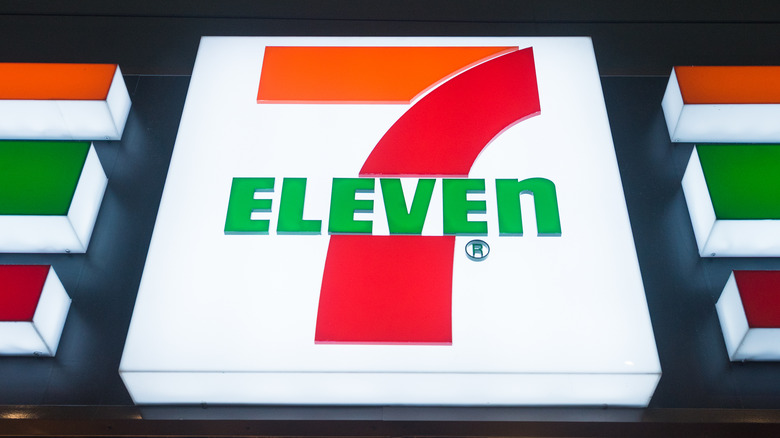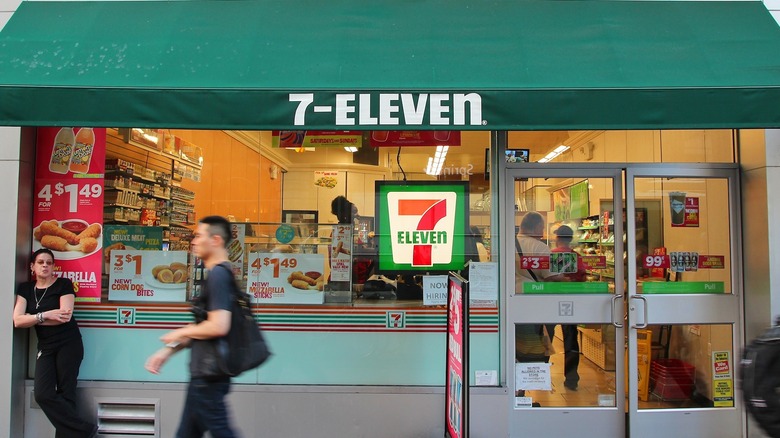There Are A Stunning Number Of 7-Eleven Locations In The World
If you're going to build a business empire the first thing you need is a good business idea. However, if you're really canny, you don't even need to worry about dreaming up a product — just sell somebody else's. Grocery stores are certainly the champions of this type of business model, and 7-Eleven has created an empire by doing so. The company achieves an annual revenue of almost $87 billion, according to data from CompaniesMarketCap. That's more than a few loaves of bread.
Although such a massive financial figure might be difficult to comprehend, when you factor in the number of stores 7-Eleven operates worldwide, it becomes a whole lot easier to understand. While the convenience store chain may have only started in 1927 with a single shop in Dallas, Texas, the company now claims to have "more stores than any other retailer in the world" (per 7-Eleven). So the big question is: Exactly how many 7-Eleven stores are there?
7-Eleven has more locations than other major corporations
A clue to the scale 7-Eleven's overall presence is that the company has acquired other brands, including Speedway, Stripes, and Laredo Taco Company, according to 7-Eleven. Just in the U.S. and Canada, 7-Eleven confirms that it operates a total of 14,000 stores, while across the world that figure rises to a staggering 71,100. This includes locations in countries such as Japan, Norway, and India.
To put that figure into context, 7-Eleven even has more outlets than some of the world's biggest corporations, including McDonald's (which claims over 38,000, according to its website). It's little wonder that 7-Eleven's huge global footprint makes it one of the world's most successful franchises, reports Franchise Direct, coming second only to KFC.
There's no sign that 7-Eleven is going to stop expanding its convenience store empire — indeed, growing shop numbers remains a key objective of the company. The Food Institute explains that 7-Eleven intends to add even more stores in the U.S., eventually bringing the total to 20,000.

